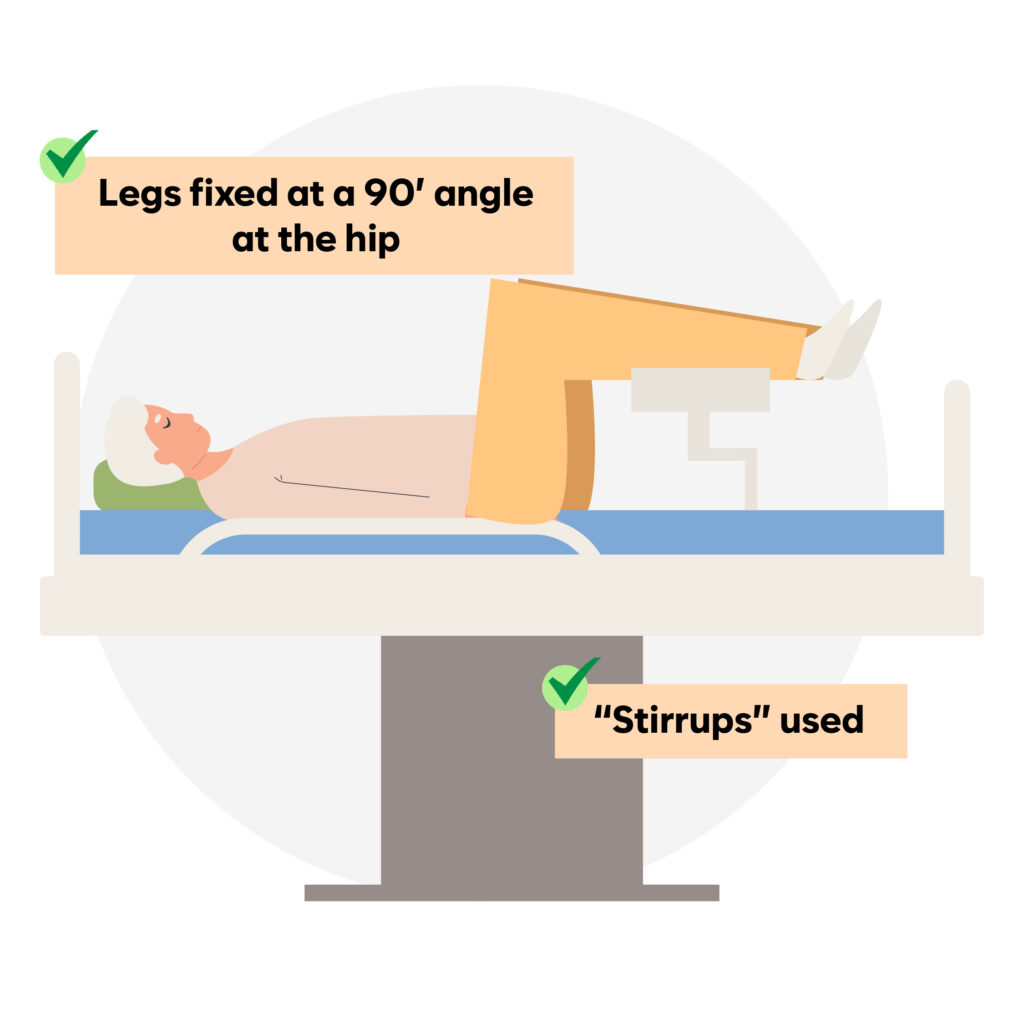Patient positioning is a fundamental aspect of nursing care. As a nurse, it’s crucial to have a solid grasp of the various positions and their purposes. In this comprehensive guide, we will delve into different patient positions, their mnemonic aids for easy recall, and potential complications associated with each position.
Supine Position

The supine position involves placing the patient flat on their back, with their head and spine resting on the support surface, and their legs fully extended. To remember this position, think: “Put the patient on their SPINE to be supine!” This position is for various medical procedures, including surgical interventions, but it is essential to be aware of potential issues such as pressure injuries.
Prone Position

In the prone position, patients lie flat on their stomach, with the option to turn their head to either side and their legs extended. To recall this position, remember that when the patient is PRONE, they are lying “ON” their “Entrails” or “Esophagus.” This position is for certain medical procedures but must be given with caution to prevent complications.
Dorsal Recumbent Position

Patients in the dorsal recumbent position lie on their backs with their knees bent. The term “dorsal” refers to the back, and “recumbent” means lying down. This position is commonly used for procedures like foley catheterization in females and peri-care. However, it can lead to issues such as pressure injuries, which nurses must be vigilant about.
Lithotomy Position

The lithotomy position involves placing the patient on their back with their legs bent at a 90-degree angle at the hip, often with stirrups for support. This position is essential in various gynecological and genitourinary procedures. Remember that “lith” stands for stones, and “otomy” denotes cutting or incision. Complications include pressure injuries and potential nerve damage from stirrups.
Sims’ Position (Semi-prone)

Sims’ position, or semi-prone, requires the patient to lie on their left side with the right knee and hip flexed, and the left hip and knee slightly extended. This position is particularly useful when the dorsal recumbent position is not tolerable. Potential complications include pressure injuries, which nurses need to monitor for.
Lateral Recumbent Position

In the lateral recumbent position, patients lie on either their right or left side. This position can be right or left lateral recumbent. It’s often employed in situations where maintaining an open airway is crucial, such as during seizures, unconsciousness, or post-operative care. However, pressure injuries and brachial plexus damage are potential concerns.
Fowler’s Positions

Fowler’s positions focus on the angle of the head of the bed. These positions take their name from surgeon George Ryerson Fowler and come in four types: Low Fowler’s, Semi-Fowler’s, Fowler’s, and High Fowler’s. Low and Semi-Fowler’s positions. Also, you must have the head of the bed elevated at different angles, while Fowler’s position has the patient sitting up in bed at a 45–60-degree angle. High Fowler’s is the most upright position. These positions serve various purposes, but pressure injuries can still be a concern.

Trendelenburg Positions

Trendelenburg positions take their name from surgeon Friedrich Trendelenburg and come in three types: Trendelenburg, Reverse Trendelenburg, and Modified Trendelenburg. Each position serves specific medical purposes, such as central venous catheter placement or reducing blood flow during head and neck surgeries. It is essential to understand when and how to use these positions effectively.

Conclusion
Understanding patient positioning is a vital skill for nurses. This guide has provided a comprehensive overview of different patient positions, their mnemonic aids, and potential complications. As a nurse, mastering these techniques will ensure that you can provide safe and effective care to your patients.




